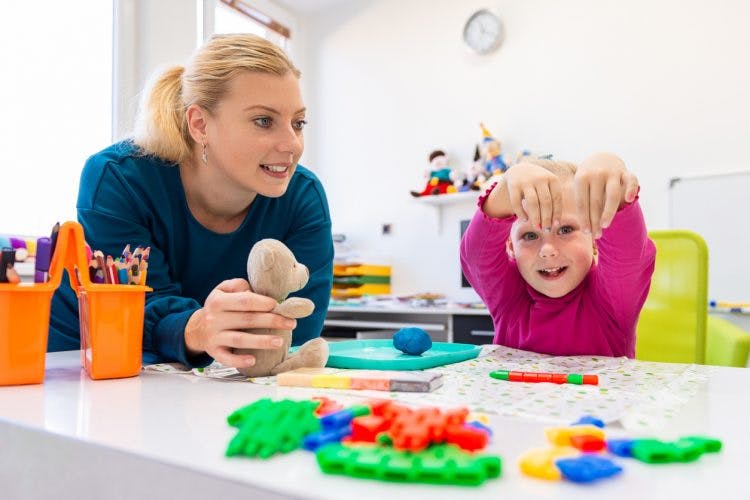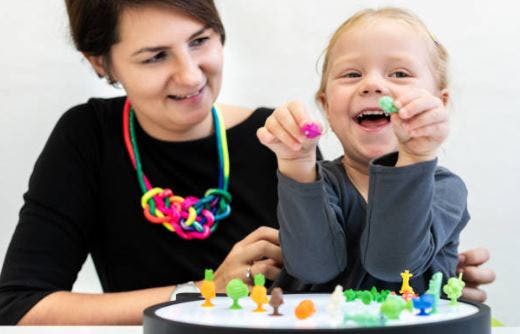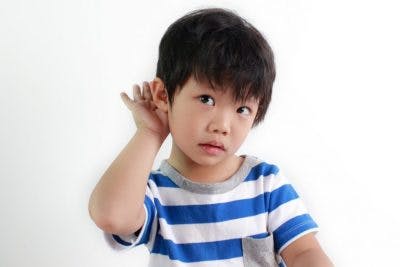No products in the cart.
No products in the cart.
No products in the cart.
No products in the cart.
Home » Neurological Recovery Blog » Cerebral Palsy » Understanding Sensory Problems Due to Cerebral Palsy
Last updated on October 2, 2019

Is it possible to have sensory problems due to cerebral palsy?
Although cerebral palsy is a motor disorder, it’s relatively common for children with CP to also have co-occurring sensory problems.
Generally, these deficits won’t be due to problems with the senses themselves, but rather from damage to the area of the brain responsible for processing sensory information.
Sensory processing abnormalities in children with cerebral palsy can come in the form of hypersensitivity or hyposensitivity.
Those with hypersensitivity may be avoidant of physical touch, crowds, and loud sounds because they have heightened senses. For example, those with a hypersensitivity to touch may not be able to tolerate a shirt tag touching them, while most individuals would not even notice the tag was there.
In contrast, those with hyposensitivity will have decreased sensory processing and may not respond to stimuli because the brain cannot process it. They require more sensory input for their brain to register it.
Sensory deficits can negatively affect a child’s:

Not all children with cerebral palsy are going to have sensory deficits.
In fact, sensory problems and cerebral palsy aren’t even directly related.
Although they commonly co-occur, they’re caused by different sources of brain damage.
In this study of 96 children with cerebral palsy, sensory deficits were present in 41.7%.
Additionally, a high correlation was found between the severity of sensory problems and hand function.
Researchers concluded that “moderate to severe motor disability was associated with severe sensory dysfunction”.
In other words, more severe forms of cerebral palsy are associated with greater levels of damage to the brain, which increases the risk of co-occurring sensory impairments.
Furthermore, sensory processing difficulties may be more prevalent in those with more severe motor impairments as they are less able to actively use some of their senses to explore their environments.
Alternatively, sensory deficits may lead to a child being less willing or motivated to explore their environment. This may result in less overall movement (e.g. not using the hands as frequently to play if hypersensitive to touch), which could impede development of motor skills.
Because sensory deficits can be caused by many sources of brain damage, people with cerebral palsy can technically have any form of sensory impairment.
However, some are definitely more common than others.

It’s suggested that up to 90% of all children with cerebral palsy have some sort of visual impairment.
While mild visual impairments are very prevalent, only about 10% will have a severe visual impairment.
Cortical vision impairments are the result of the brain not being able to process what the eyes see.
Children with cortical vision impairments may demonstrate delayed reactions, blank staring, difficulty recognizing familiar faces, an attraction to shiny or bright objects, and be overwhelmed by clutter.

There are 3 types of hearing impairments children with cerebral palsy can experience:
Hearing impairments can negatively affect your child’s communication skills if not properly managed.
Many hearing impairments can be improved through medications, hearing aids, surgery, or cochlear implants.

Tactile impairments refer to problems with one’s sense of touch.
A tactile sensory processing problem makes it difficult for children to understand the characteristics of their surroundings, which will discourage them from interacting with their environment. Tactile defensiveness, which occurs when children are hypersensitive to touch, can especially hinder environmental exploration and interaction.
It is essential for children to explore what’s around them in order to develop sensory coordination and to understand what is safe or not. Exploration through touch also plays a strong role in the development of motor skills.

Proprioception refers to one’s sense of body positioning and spatial awareness.
Proprioceptors (the receptors for this sense) are located in the joints and muscles.
Abnormal muscle tone will interfere with proprioception and impair balance, coordination, and posture.

Children can go to sensory integration therapy to improve their sensory processing skills.
Trained occupational therapists will have the child participate in activities specifically designed to stimulate the senses. Frequently, a multi-sensory approach is used, where more than one sensory system is being stimulated at a time.
The idea behind sensory integration therapy is that over time, continuous sensory stimulation will train the brain to rewire itself (neuroplasticity) and improve its sensory processing and regulation skills.
Part of sensory integration therapy may also include a sensory diet for home. A sensory diet, or a program including various sensory activities for a child to participate in throughout their day, is frequently used to ensure that children are getting an appropriate amount of sensory input each day. Sensory diets can also help increase the ability to process and regulate sensory input.
It’s crucial for parents of children with cerebral palsy to keep an eye out for symptoms of sensory problems like delayed reactions, avoidant or over-reactive behavior, and poor coordination.
Unlike adults who get neurological damage due to a traumatic injury, children with sensory deficits are generally born with them and don’t necessarily understand what it’s like to have typical sensory functions.
The younger you are, the more adaptable your brain is. Early intervention is key for improving sensory processing skills and preventing the negative consequences of sensory deficits from developing.
Hopefully, this article helped you better understand the link between cerebral palsy and sensory deficits. Although brain damage cannot be reversed, the brain can be trained to adapt with enough repetition. Good luck!

Get our free 19-page PDF full of helpful tips for cerebral palsy by signing up below! If you liked this article, you’ll LOVE our free ebook.
When you sign up, you’ll also receive our popular emails that share more tips for life with cerebral palsy — you can opt out anytime.
We will never sell your email address, and we never spam. That we promise.


At Flint Rehab, we understand that doing physical therapy at home can become tedious and repetitive. But when repetition is critical to recovery, it’s important to stick with a repetitive regimen. But that doesn’t mean it has to be boring.
Flint Rehab is the leading manufacturer of motion-sensing, gamified rehabilitation devices. Our bestselling recovery tool, FitMi, transforms full-body rehab exercises into an interactive experience.
See what individuals with CP are saying about FitMi:
“The FitMi and MusicGlove have done wonders for my son with hemiparesis from cerebral palsy and stroke. It motivates him to do his exercises. It does not seem like therapy for him since it is fun. FitMi monitors his progress so it is a great reinforcement for him. Music is a motivator for him. He has been using it on his arm and we will try the leg exercises soon.”
-Manning
While FitMi is a recovery tool for the full-body, our other device, MusicGlove, helps target the hand to improve fine motor skills and dexterity.
See what others have said about MusicGlove:
“My granddaughter has right-side hemiplegia from Cerebral Palsy / stroke at birth. She states that this is a great product for anyone who has issues with the use of their hand(s), and that is has helped her tremendously. She also finds the music quite catchy (surprisingly!). Our occupational therapist has been impressed as well. I can say that it has arguably been the best tool of all our therapy resources.”
-Jenni
Together, FitMi and MusicGlove make a powerful home therapy regimen for individuals with cerebral palsy. Best of all, you can save money when you bundle them together.
To learn more, click the button below:

Do you have these 19 pages of helpful tips for CP?
Get a free copy of our ebook Helpful Tips for Managing Cerebral Palsy. Click here to get instant access.
Grab a free rehab exercise ebook!
Sign up to receive a free PDF ebook with recovery exercises for stroke, traumatic brain injury, or spinal cord injury below: